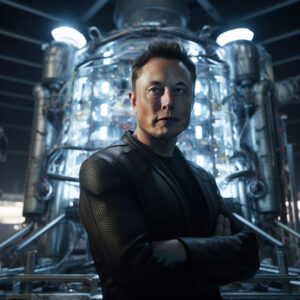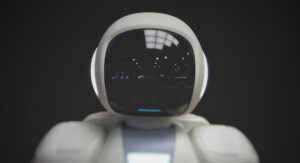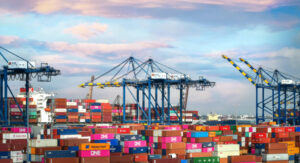The Boston Dynamics Story: From Creepy Driving Robots to Useful Electric Pops

How it all began
The founder of Boston Dynamics Mark Raybert was born in 1949. In 1973, he became a bachelor in electrical engineering, and in 1977 he defended his doctoral in MIT (Massachusetts Technological Institute). Raybert was engaged in robotics in the NASA reactive laboratory and at the Institute of Technology in California. In 1979, he received a grant from the American scientist Iven Saserland to develop a jumping mechanism, and in 1980 — from DAPRA (the Office of Promising Research Projects of the US Ministry of Defense).
In the 1980s, Raybert created a laboratory based on one of the MIT units and headed it until the early 1990s. On the university’s website, the page of that time was even preserved. In 1983, he made a breakthrough in robotics: he developed a one-legged jumping mechanism 3D One-Leg Hopper, capable of maintaining balance. As the Creator explained, it is easier to keep a balance on one leg and you do not need to figure out how to coordinate the movements of two legs at once.
Raybert’s early developments even lit up in the cinema-in the early 1990s, the scientist helped to create robots for the film “The Rising Sun”. After filming, Raybert thought about releasing his product — robots similar to people and animals, and in 1992, together with a group of engineers, created Boston Dynamics. For three years, the company worked on the basis of the University of Massachusetts and in 1995 completely separated from it.
And although modern robots, mainly on caterpillars or wheels, in Boston Dynamics rely on mechanisms with two or four legs — the limbs are universal and give much more opportunities.
Boston Dynamics robots: dog, cheetah and flea
Initially, Boston Dynamics worked mainly for the US Department of Defense and created robots that can overcome the crossed terrain for military purposes.
So the first robots appeared, some of which were later declassified. Due to the similarity with animal behavior, the name of the mechanisms in Boston Dynamics came up with the appropriate ones.
Dog
Bigdog was released in 2005. This is a four -legged robot, similar to a dog, but in size from a bull. Bigdog could carry up to 150 kilograms of supplies and equipment of soldiers, move at a speed of up to 6.4 km/h, like a person, even in mud, puddles and mountains, preserving the balance. Due to the strong noise from the internal combustion engine, the BigDOG project was closed in 2015, but thanks to it the company became known outside the professional circle, the published videos on YouTube also helped in this.
Cheetah
In the early 2010s, the company introduced Cheetah, a robot-gap, who at that time became the fastest in the world a robot on four legs. He moved at a speed of 45 km/h (this was facilitated by the bending upper part), but could not work autonomously. Wildcat appeared on its base in 2013. Also with a fuel engine, but already autonomous, it moved at a speed of up to 26 km/h.
Sand flea
In Boston Dynamics, they also worked on compact models in the form of insects. Sand Flea («Sand Bloch») has four wheels, works silently (on compressed gas) and jumps through obstacles to the height of a three -story building.
Anthropomorphic robot
In the 2010s, the first anthropomorphic robot appeared-Petman. The founder of the company with skepticism perceived the idea of creating a human robot, and Petman moved on two legs just because it was used to test the costumes of chemical protection.
Google deal and the most popular robots
In 2013, Boston Dynamics, along with other startups in the field of robotics, was bought by Google. The amount of the transaction amounted to $ 500 million. Under the leadership of Google, the company worked until 2017, but it was in this short period of time that created two the most important robot in its history — Atlas and Spot.
The ATLAS presented in 2013 is a two -legged robot one and a half meters high and weighing 75 kilograms. He has a stereo chamber set, can overcome obstacles, climb, make somersaults and other tricks, transfer cargoes weighing up to 11 kg. In the New York Times, the debut of this robot was described as follows: «Computers begin to grow legs and move in the physical world.» And they called Atlas a new look — Robo sapiens.
Spot was introduced in 2016 — this is a robot on four legs weighing about 25 kg. It differs from previous robops with electric drives, due to which it moves almost without noise. Thanks to the set of sensors and cameras, people and objects can recognize, as well as move up the stairs, has excellent coordination, can study, orient themselves on the ground and develop speeds of up to 5.8 km/h.
The younger brother of this robot is Spotmini. It can also be equipped with a hand that looks like a long neck and head, which allows him to take and transfer things. The battery is enough for an hour and a half of the battery life.
In February 2017, the company introduced a new robot, which has four limbs and wheels on the legs. Handle was created for transportation of things, it can raise a load weighing up to 50 kg. The height of the robot is 2 meters, speed — 15 km/h. The stroke reserve with a full charge of the battery is greater than that of other robots — 25 km: moving on wheels saves expendable energy.
The Google and Boston Dynamics Union was unsuccessful because they did not agree on work: the former wanted to create a well -sold product, and the latter — perfect, but not necessarily successful robots in the market.
The company today
In 2017, Boston Dynamics survived another change of owner — the startup was acquired by the Japanese company SoftBank. But under the wing of SoftBank, the company also spent a little time and did not become profitable.
In 2020, the startup bought Hyundai for almost $ 1.1 billion. In Hyundai, they hoped to create new “walking” cars in tandem with Boston Dynamics, as well as robots for logistics and production automation. So, in 2021, the company introduced another robot intended, like its predecessor Handle, to work in warehouse and for unloading cars. Stretch can move up to 800 boxes in an hour — each weighing up to 23 kg.








